Best Overall Double
Reed Instrument
-
Overall: 10/10
-
Best Feature: Made from the highest quality woods
-
TedScore™: 10/10
Best Oboe for
Beginners
-
Overall: 9/10
-
Best Feature: Made with ABS resin body
-
TedScore™: 9/10
Best Student
Bassoon
-
Overall: 9/10
-
Best Feature: Short bore with a red maple body
-
TedScore™: 9/10
Double reed instruments stand out as the quirky and captivating folks of the woodwind family. Their unique sound and eye-catching looks are sure to grab your attention.
From the haunting melodies of the oboe and English horn to the deep, resonant tones of the bassoon and contrabassoon, double reed instruments have found their way into various musical genres.
Whether you’re a classical music buff or a jazz enthusiast, a double reed instrument will capture your heart.
So why not take a closer look at these fascinating instruments and discover the magic of the double reed?
Overview of Double Reed Instruments
Double reed instruments are a fascinating family of musical instruments that produce sound using two pieces of cane vibrating against each other.
These instruments have been around for centuries and are used in various cultures and musical genres.
The History of Double Reed Instruments
The history of double-reed wind instruments can be traced back to ancient times. The first known double-reed instrument was the aulos, a Greek instrument used in religious ceremonies and theatrical performances. The oboe, one of the most popular double reed instruments today, was developed in the 17th century and became popular in the Baroque period. The bassoon, another popular double reed instrument, was developed in the 18th century and was used extensively in orchestral music.
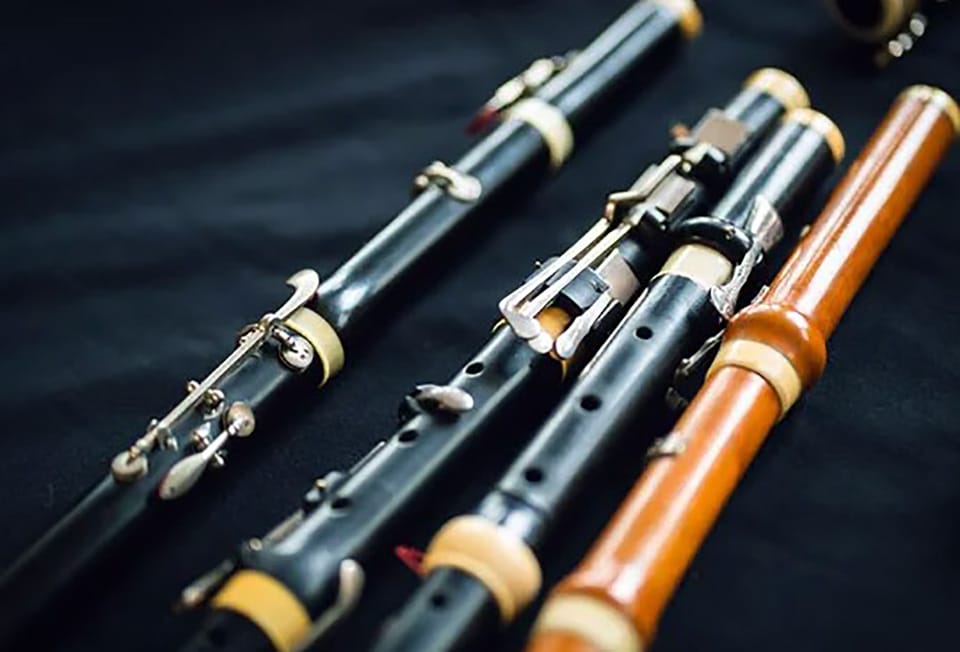
Materials Used in Double Reed Instruments
Double reed instruments are typically made of wood, although some modern instruments use synthetic materials. The most common woods used in double-reed instruments are maple and ebony.
Canes, a type of grass that grows in the Mediterranean region, is used in reed construction. The cane is harvested, dried, and then cut into thin strips. These strips are then shaped and tied together to form the double reed blades.
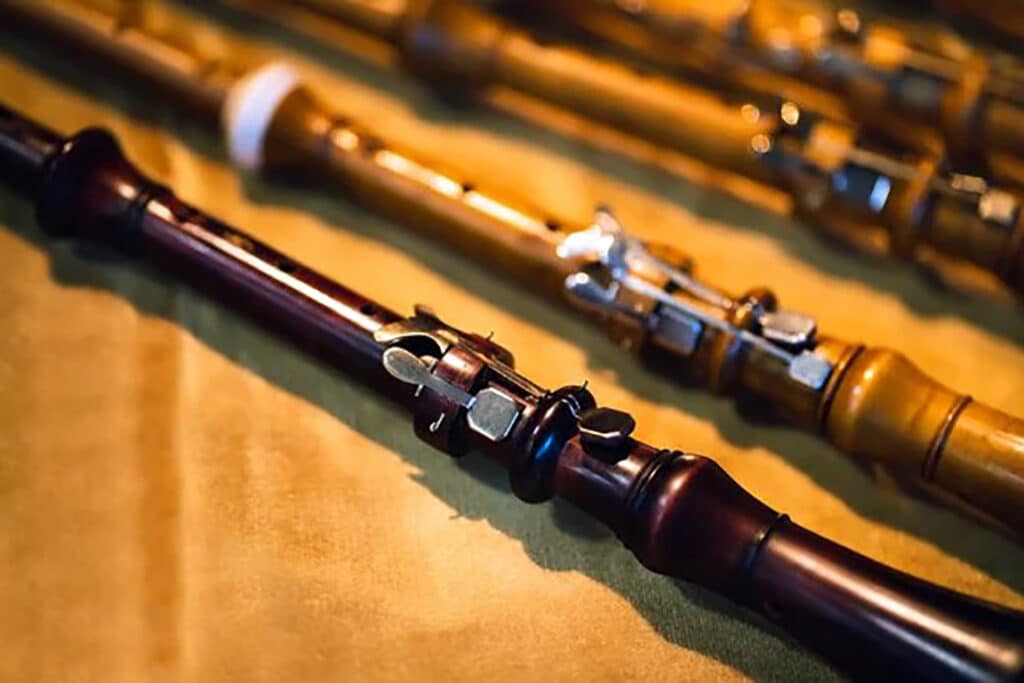
Reeds can be bought either ready-made or in different stages of configuration like part-scraped reed blanks or the staples and cane can be procured separately.
The Anatomy of Double Reed Instruments
Reeds
The reeds are the most essential part of the instrument. They’re made of two thin pieces of cane that vibrate against each other to produce sound.
Double reed instruments require a lot of precision when making double reeds, as they must be perfectly balanced and shaped to produce the desired sound.

Bocal
The bocal is a metal tube that connects the reed to the rest of the instrument.
It directs the sound the reed produces into the instrument’s body. The bocal’s length and shape can significantly impact the instrument’s sound.
Players can experiment with different bocals to find the one that produces the desired sound.
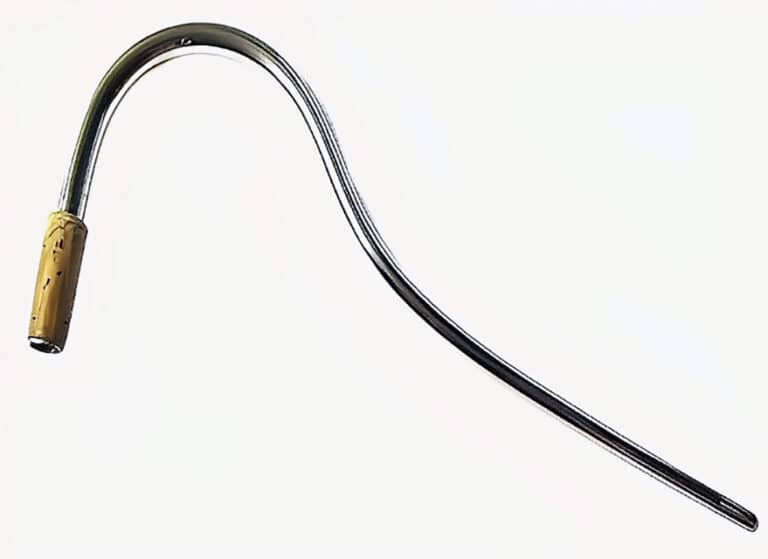
Bell
The bell is the flared end of the instrument that amplifies the sound produced by the reed.
The shape and size of the bell can also affect the instrument’s sound.
Some instruments have detachable bells, allowing players to experiment with different sizes and shapes to achieve the desired sound.
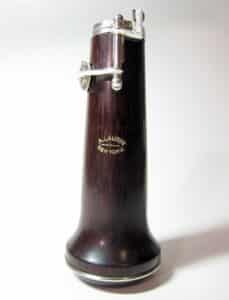
Bore
The bore is the interior of the instrument’s body.
It determines the instrument’s pitch and tone quality.
The bore’s size and shape can also affect the instrument’s intonation and response.
Different instruments have different bore sizes and shapes,
And players can choose the one that best suits their needs.
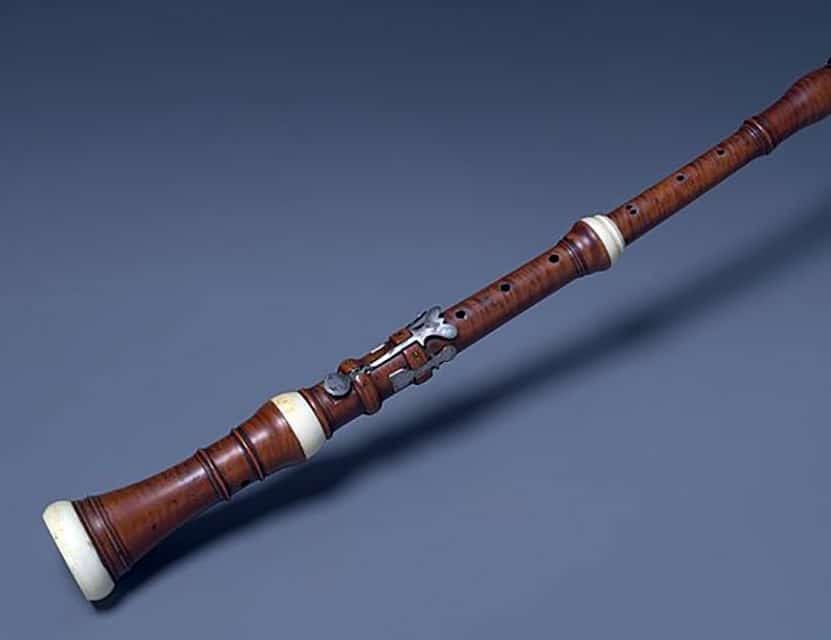
Keys
The keys are the metal mechanisms that control the instrument’s sound.
They’re used to cover and uncover tone or finger holes,
Which alters the pitch and tone quality of the instrument.
Different instruments have different key systems,
And players can choose the one they find most comfortable and easy to use.
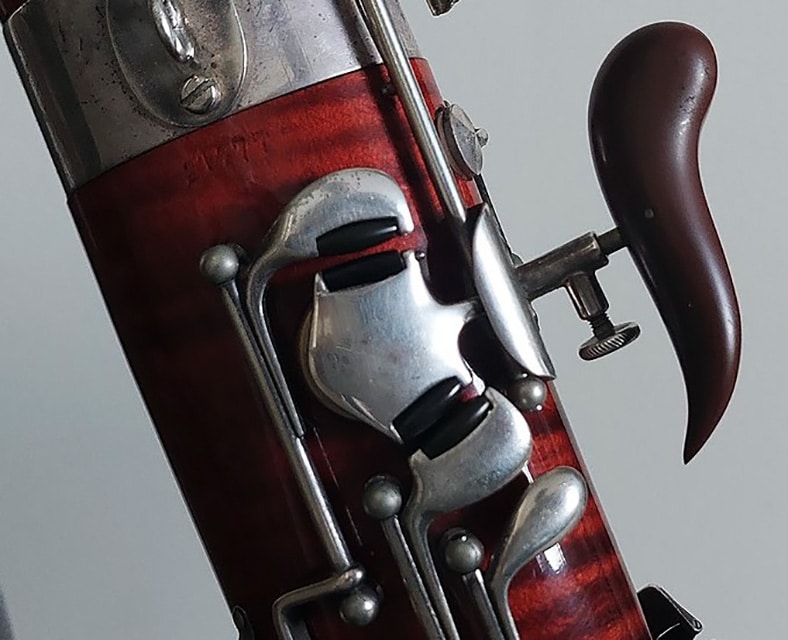
Types of Double Reed Instruments
Oboe
The oboe is probably the most well-known double-reed instrument. It was invented in the late 1600s and used extensively in baroque and classical music.
The oboe has a distinctive sound that is both haunting and beautiful. It is often used to play solos and melodies in orchestral pieces.
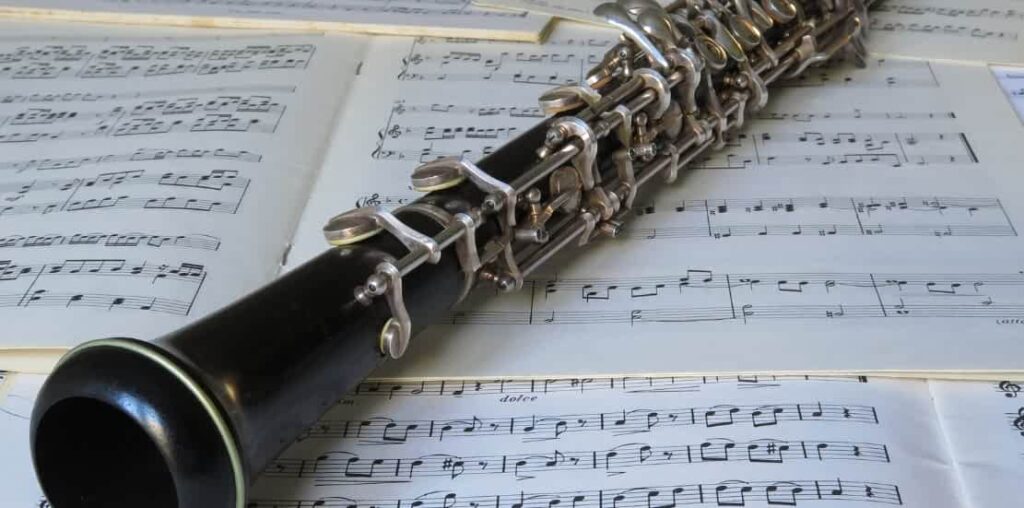
Bassoon
The bassoon is a large double-reed instrument that produces a deep, rich sound.
It’s often used in orchestras to play low-pitched melodies and harmonies.
The bassoon has a complex mechanism that allows the player to
Produce a wide range of notes.
It’s a versatile instrument used in many different musical styles.
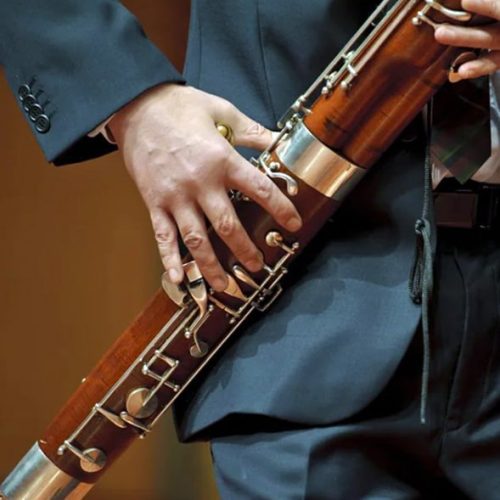
English Horn
The English horn is a double-reed instrument similar in appearance to the oboe.
However, it has a lower pitch and a more mellow tone.
The English horn is often used to play solos
In orchestral pieces and in chamber music.
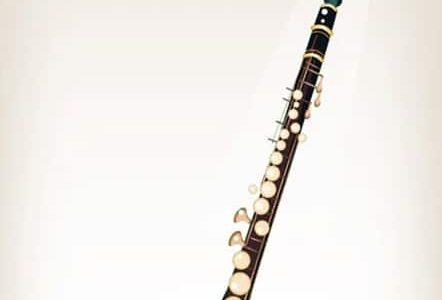
Contrabassoon
The contrabassoon is a very large double-reed instrument that produces a deep, resonant sound.
It’s often used in orchestras to play the lowest notes in a piece of music.
The contrabassoon is a rare instrument not often used in smaller ensembles.
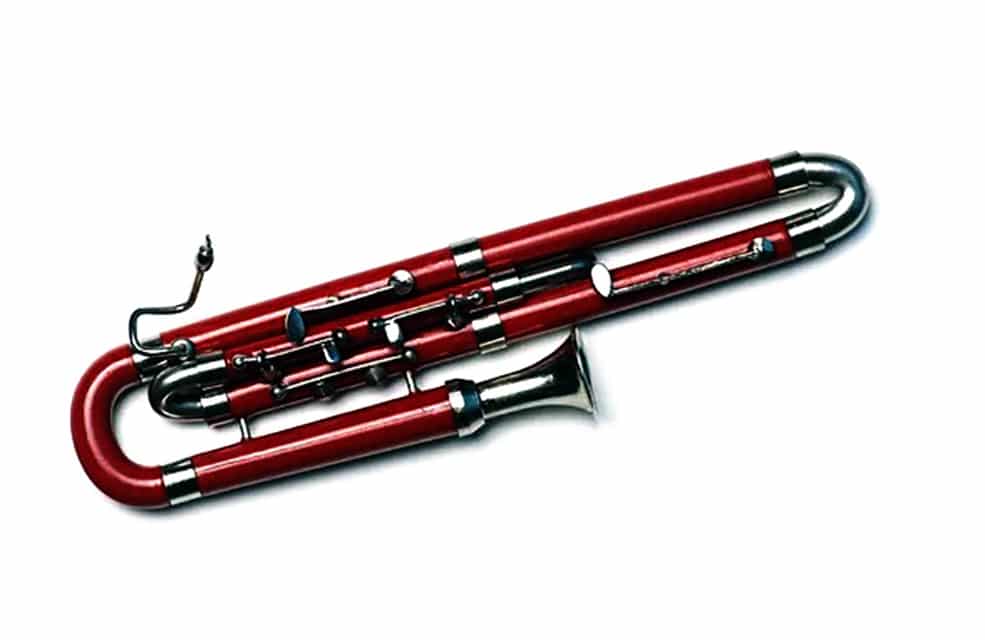
heckelphone
The heckelphone is a large double-reed instrument
That is similar in appearance to the oboe.
However, it has a lower pitch and a more mellow tone.
The heckelphone is often used in orchestras
To play low-pitched melodies and harmonies.
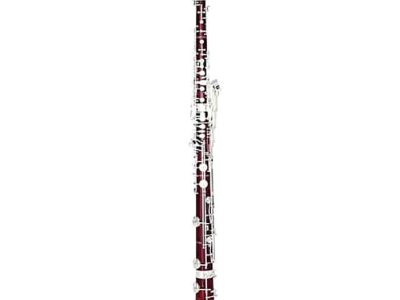
Sarrusophone
The sarrusophone is a double-reed instrument that
Is similar in appearance to the saxophone.
It has a very powerful sound and is often used in military bands.

Crumhorn
The crumhorn is a double-reed instrument that was popular in the Renaissance period.
It has a distinctive sound and is often used in early music ensembles.
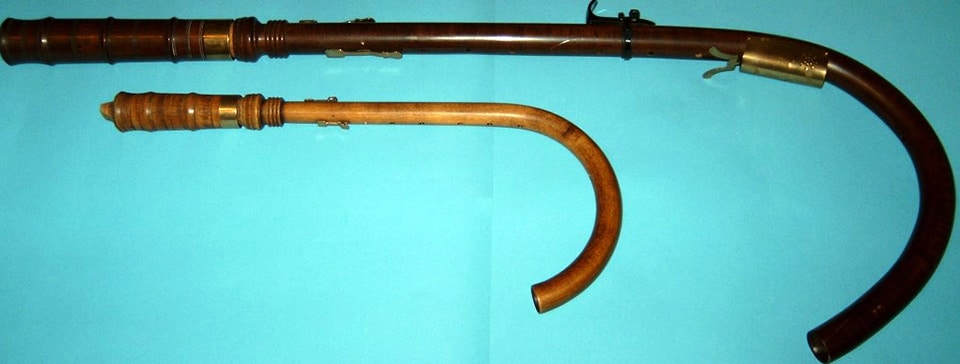
Dulcian
The dulcian is a double-reed instrument
That was popular in the Baroque period.
It has a very mellow tone
And is often used in orchestras and chamber music.
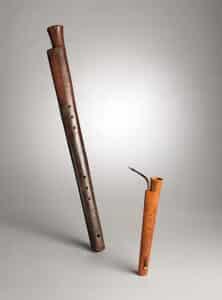
Oboe da Caccia
The oboe da caccia is a double-reed instrument popular in the Baroque period.
It has a lower pitch than the oboe and a more mellow tone.
The oboe da caccia often plays low-pitched melodies in orchestral pieces.
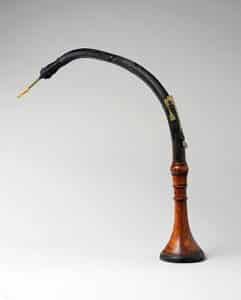
Rackett
The Rackett is a double-reed instrument that was
Popular in the Renaissance period.
It has a very distinctive sound and is often used in early music ensembles.
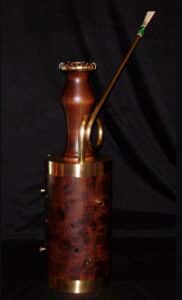
The Sound Production in Double Reed Instruments
When you blow air into a double reed instrument, the two pieces of cane vibrate against each other, producing a unique sound.
The sound is created by the reed’s vibration, caused by the air pressure created by the player’s breath.
The reed’s vibration causes the air column inside the instrument to vibrate, creating sound waves amplified by the instrument’s resonant chamber.
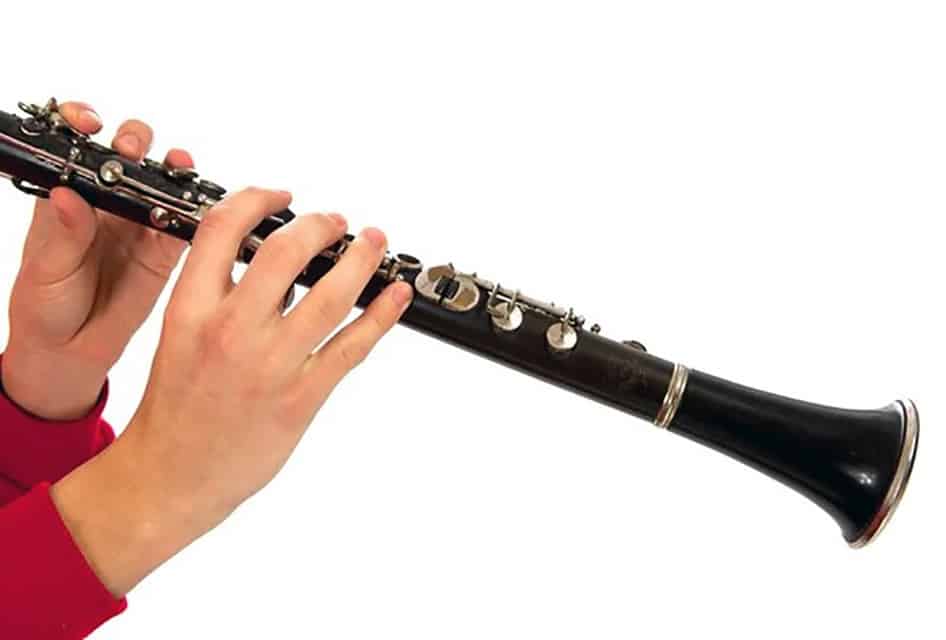
The length of the air column inside the instrument determines the pitch of the sound produced by a double-reed instrument.
By changing the length of the air column, the player can change the pitch of the sound produced.
This is typically done by opening or closing holes or keys on the instrument, which changes the length of the air column.
The Role of Double Reed Instruments in Ensembles
Double reed instruments provide a unique sound instantly recognizable and can add depth and richness to any musical composition.
In orchestras, the oboe and bassoon are often used to play solos and provide accompaniment to all the other instruments.
In wind bands, the oboe and bassoon are often used to provide the harmonic foundation for the ensemble.
Best Double Reed Instruments
FOX 240 Bassoon

FEATURES: _Made with a red maple body for an exceptionally rich and resonant tone
-Boasts a full German system with high D and E keys
-Short bore
- A flexible, free-blowing instrument with a strong "singing" quality
- A trusted favourite brand by teachers and students alike
- Comes with only two bocals, which may limit the range of playing options
When you click ‘Check Price’, you’ll see there are loads of great places to buy this item. Our personal favorite is Sweetwater for the US, and Thomann and Gear4Music for the UK & Europe.
They are the largest music retailers, with excellent customer service, competitive prices, really fast shipping, and the longest guarantees.
The professional musician who wrote this article combined many things,
from the product build, manufacturer’s reputation through to feedback
from other users, to create our famous TedScore™.
Heckel Bassoon

FEATURES: -Made from the highest quality woods
-Fully customizable, with options for tone hole placement, keywork, and other specifications
-Offers a rich, complex tone and exceptional projection
- Handmade by skilled craftsmen in Germany
- Unique and tailored to the specific needs and preferences of every musician
- Custom-made and therefore can be very expensive
When you click ‘Check Price’, you’ll see there are loads of great places to buy this item. Our personal favorite is Sweetwater for the US, and Thomann and Gear4Music for the UK & Europe.
They are the largest music retailers, with excellent customer service, competitive prices, really fast shipping, and the longest guarantees.
The professional musician who wrote this article combined many things,
from the product build, manufacturer’s reputation through to feedback
from other users, to create our famous TedScore™.
Yamaha YOB241B30 Student Oboe

FEATURES: Constructed with an ABS resin body
OTHER INFO: Features a semiautomatic, simplified conservatoire system that makes playing and learning easier
- Produces a warm tone similar to that of wooden instruments
- Designed to facilitate learning and playing
- Includes a 200 Series Case
- Due to its resin material, the oboe may require more frequent maintenance
When you click ‘Check Price’, you’ll see there are loads of great places to buy this item. Our personal favorite is Sweetwater for the US, and Thomann and Gear4Music for the UK & Europe.
They are the largest music retailers, with excellent customer service, competitive prices, really fast shipping, and the longest guarantees.
The professional musician who wrote this article combined many things,
from the product build, manufacturer’s reputation through to feedback
from other users, to create our famous TedScore™.
Yamaha YOB431B Intermediate Oboe

DESIGNED FOR: Intermediate
FEATURES: Aged and seasoned grenadilla wood body for a professional sound
OTHER INFO: ABS resin body enhances durability
Yamaha YOB431B Intermediate Oboe
- Comes with 400 Series Case
- Makes learning fun and easy
- Expensive
When you click ‘Check Price’, you’ll see there are loads of great places to buy this item. Our personal favorite is Sweetwater for the US, and Thomann and Gear4Music for the UK & Europe.
They are the largest music retailers, with excellent customer service, competitive prices, really fast shipping, and the longest guarantees.
The professional musician who wrote this article combined many things,
from the product build, manufacturer’s reputation through to feedback
from other users, to create our famous TedScore™.
Yinfente Professional Oboe
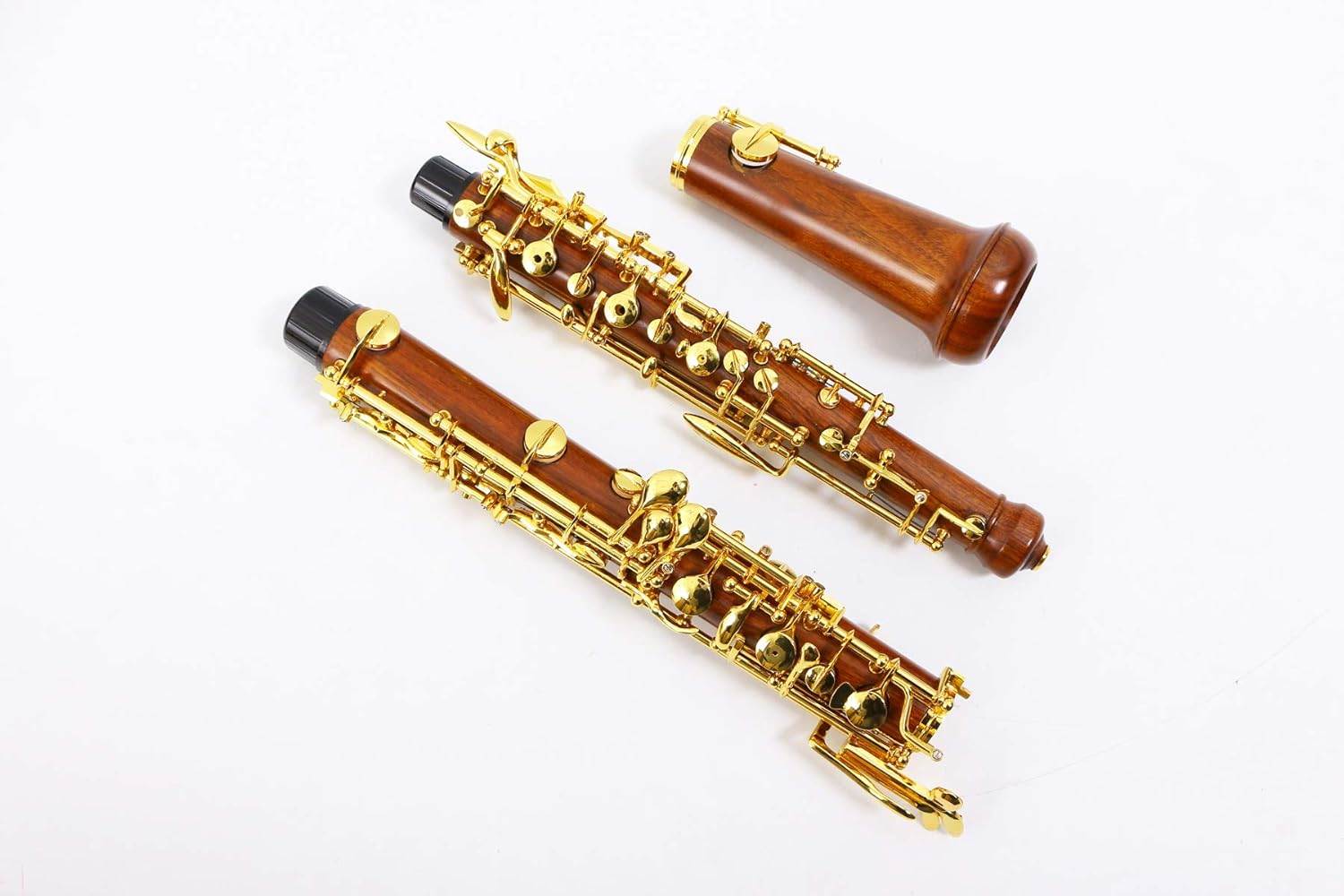
FEATURES: Created from Rosewood or Ebonite wood
OTHER INFO: Features a C key with left F resonance and a semi-automatic system
- The intonation has been adjusted for professional use
- More affordable option for a professional player
- Includes a high-quality case and cover
- A relatively new and lesser-known brand
When you click ‘Check Price’, you’ll see there are loads of great places to buy this item. Our personal favorite is Sweetwater for the US, and Thomann and Gear4Music for the UK & Europe.
They are the largest music retailers, with excellent customer service, competitive prices, really fast shipping, and the longest guarantees.
The professional musician who wrote this article combined many things,
from the product build, manufacturer’s reputation through to feedback
from other users, to create our famous TedScore™.
Double Reed Instruments
Summary
If you’re looking to play a wind instrument, you might want to consider a double reed instrument.
These instruments are unique in the way they produce sound. Unlike single-reed instruments, these instruments from the double-reed family have two pieces of cane vibrating against each other to produce sound.
The most famous double reed instruments are the oboe, bassoon, and English horn. Each instrument has its unique sound and style, so choosing the right one is essential.
Whether you choose among these, you’ll have a great time playing and exploring the world of double reed instruments!
Before you go…
The oboe is a double-reed instrument known for its unique sound and versatility in various musical genres.
And if you’re still curious about the oboe family, check out the next article and explore the Best Oboe Brands, offering insights into their quality, craftsmanship, and overall value!
FAQ's
The oboe and bassoon are both woodwind instruments that have a double reed. The double reed comprises two pieces of cane that vibrate against each other to produce sound.
The contrabassoon is a big double-reed instrument that’s a member of the woodwind family. It’s similar in appearance to the bassoon but is much larger and produces a lower sound.
The English horn is a double-reed instrument that’s similar to an oboe. It’s larger than an oboe and produces a lower, more mellow sound.
Yes, a bassoon has a double reed. The double reed comprises two pieces of cane that vibrate against each other to produce sound.










The historical perspective on double reed instruments provided by Cory Barger is thoroughly engaging. It’s remarkable how these instruments have evolved over the centuries, influencing music and culture along the way. Composers have indeed leveraged their unique sounds in fascinating compositions. It’s a testament to human creativity and our enduring relationship with music.
Fascinated by the article’s mention of types of double reed instruments but I think there’s a huge gap in how digital synthesis can emulate these sounds. It’s an area ripe for exploration, don’t you think? The charm of the heckelphone brought into the digital age could be groundbreaking.
Read the section on the anatomy of double reed instruments and never realized how complex they are. The bocal and bore parts sound super technical. Must be a real challenge to master making these instruments, let alone playing them. Makes me respect musicians who choose these even more.
Ever tried making one yourself?
Absolutely, it’s a blend of art and science. The precision in making and playing reeds is like nothing else!
hey Cory Barger, got a quick Q on double reed materials – you mentioned some materials used but wondering if there are any modern synthetics that are also common? trying to weigh tradition vs innovation for a project. thanks!